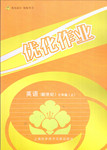题目内容
London has a population of over 7,000,000. From about the year 1800 until World War II, London was the biggest city in the world. But now there are many cities which are much bigger than it. London is famous for many things. Tourists come from all over the world to visit its famous buildings and hear the famous clock, Big Ben. Like many big cities, London has problems with traffic and pollution which stop the city from developing. Over one million (百万) people a day use the London underground, but there are still too many cars on the streets. The air isn’t clear, but it is anyhow cleaner than it was 100 years ago. For me, the best things about London are the parks. There are five in the city center. But my children’s favorite place is Hamleys, the biggest toy shop in the world.
- 1.
What’s the Chinese for “underground” in the passage?
- A.隧道
- B.地铁
- C.地下
- D.通道
- A.
- 2.
When was London the biggest city in the world?
- A.In 1750.
- B.In 1850.
- C.In 1950.
- D.In the 21st century.
- A.
- 3.
What’s Big Ben in London?
- A.It’s a toy shop.
- B.It’s a park.
- C.It’s a clock.
- D.It’s a museum.
- A.
- 4.
How many people use the London underground every day?
- A.Over half of its population.
- B.Over three quarters of its population.
- C.Over 100,000.
- D.Over 1,000,000.
- A.
- 5.
How was the air in London 100 years ago?
- A.It was much cleaner than it is now.
- B.It was the same as it is now.
- C.It was the cleanest in the history of London.
- D.It was not as clean as it is now.
- A.
1.由本段 “Over one million (百万) people a day use the London underground, but there are still too many cars on the streets.”可知。
2.由本段“From about the year 1800 until World War II, London was the biggest city in the world.”可知。
3.根据本段第四句 “Tourists come from all over the world to visit its famous buildings and hear the famous clock, Big Ben.”可知。
4.由本段“Over one million (百万) people a day use the London underground. ”可知。
5.根据本段“The air isn’t clear, but it is anyhow cleaner than it was 100 years ago”可知。

 培优三好生系列答案
培优三好生系列答案 优化作业上海科技文献出版社系列答案
优化作业上海科技文献出版社系列答案IQ(intelligence quotient智商)is a score that shows a person’s level of intelligence.
People used to believe that some people are born with a high IQ and some aren’t.
32 , a study by scientist at University College London has challenged(挑战)this idea. According to an article last October on the Journal Nature, scientists are beginning to think that our IQ is not a constant(不变的)score.
The scientists tested 33 healthy young people in 2004 between the ages of 12 and 16. Then they did tests again four years later, when the same people were between 16 and 20.
Scientists found big changes in the IQ scores between 2008 and 2004. Some 33 and some fell 34 as many as 21 points.
To test whether these scores were meaningful, the scientists compared them with results from brain scans(扫描). They found that the IQ changes matched changes in the structure(结构)of the subjects’ brains. “A change in 20 points is a huge 35 ,” said Professor Cathy Price, who led the research. He said it could mean the difference between an average and a 36 person. The team has not found a clear cause for these changes. However, they say it is 37 that education plays a role in changing IQ.
“Here we have shown that children’s 38 is likely to be still developing, ” says Price. “We have to be careful not to write off 39 performers at an early stage. In fact, their IQ may improve in a few more years. ”
| 【小题1】 |
|
| 【小题2】 |
|
| 【小题3】 |
|
| 【小题4】 |
|
| 【小题5】 |
|
| 【小题6】 |
|
| 【小题7】 |
|
| 【小题8】 |
|
London has a population of over 7,000,000. From about the year 1800 until World War II, London was the biggest city in the world. But now there are many cities which are much bigger than it. London is famous for many things. Tourists come from all over the world to visit its famous buildings and hear the famous clock, Big Ben. Like many big cities, London has problems with traffic and pollution which stop the city from developing. Over one million (百万) people a day use the London underground, but there are still too many cars on the streets. The air isn’t clear, but it is anyhow cleaner than it was 100 years ago. For me, the best things about London are the parks. There are five in the city center. But my children’s favorite place is Hamleys, the biggest toy shop in the world.
1.What’s the Chinese for “underground” in the passage?
|
A.隧道 |
B.地铁 |
C.地下 |
D.通道 |
2. When was London the biggest city in the world?
|
A.In 1750. |
B.In 1850. |
|
C.In 1950. |
D.In the 21st century. |
3. What’s Big Ben in London?
|
A.It’s a toy shop. |
B.It’s a park. |
|
C.It’s a clock. |
D.It’s a museum. |
4. How many people use the London underground every day?
|
A.Over half of its population. |
B.Over three quarters of its population. |
|
C.Over 100,000. |
D.Over 1,000,000. |
5. How was the air in London 100 years ago?
|
A.It was much cleaner than it is now. |
|
B.It was the same as it is now. |
|
C.It was the cleanest in the history of London. |
|
D.It was not as clean as it is now. |

